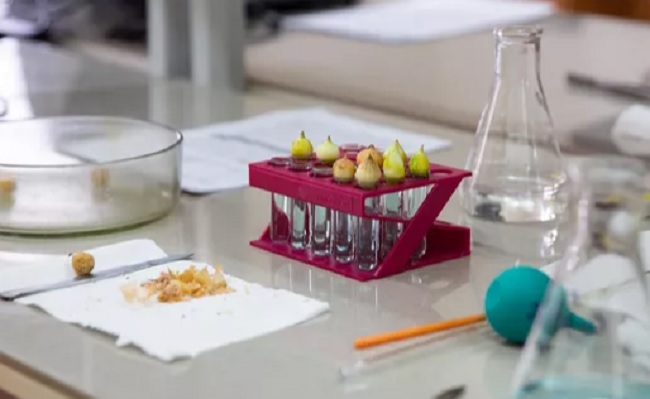According to them, the technology, unlike analogues, uses grown plant cells, thanks to which it is possible to "assemble" dishes with the necessary biochemical parameters. The results are published in the journal Gels.
Food 3D printing, according to experts, is of interest due to the unique possibilities for controlling the parameters of the resulting food.
In the future, this technology will become one of the ways to manage eating behavior, scientists say, since it can be used to create products with a given texture, nutritional value, appearance and taste.
Already today, 3D food printing is in demand, for example, in clinical nutrition, nutrition of various expeditions or other groups of people who are forced to be outside civilization for a long time.
Researchers at Vyatka State University (Vyatka State University) have developed several new food ink recipes based on artificially grown cells of plant callus tissues. Callus, as the scientists explained, is called unspecialized pluripotent plant cells that can develop into a whole plant.
“Products obtained using our 3D food printing method have been tested and are fully edible. We have selected the optimal temperature and printing speed, layer thickness and other process parameters” - said VyatSU Vice-Rector for Science and Innovation Sergey Litvinets.
The difference between the proposed technology and analogues, according to the authors, is that only biotechnologically grown material is used. This approach allows you to standardize the process and use exactly those plant cells that are needed in a particular situation.
"It is likely that food 3D printing can become an alternative way to deliver biologically active substances to the body. Using our technology, it is possible to control not only the composition of the product, but also, for example, the time the food stays in the oral cavity, which is actually a way to control satiety" – Sergey Litvinets explained.
Cooking in this way allows you to assemble a dish with the necessary biochemical parameters like lego, the scientists noted, and also makes it possible to combine the advantages of different plant products.
Now university specialists are working on adding stable crops of such traditional food plants as strawberries, blueberries, lingonberries and a number of others to the "palette" of biomass.
In the future, the scientific team plans to expand the range of plants used, create new recipes and develop new technological modes for printing food products.
The study was supported by the Russian Science Foundation, project No. 22-24-01060, and within the framework of the strategic project "Health Technologies" of the Priority 2030 development program.
Source: "РИА Новости"

